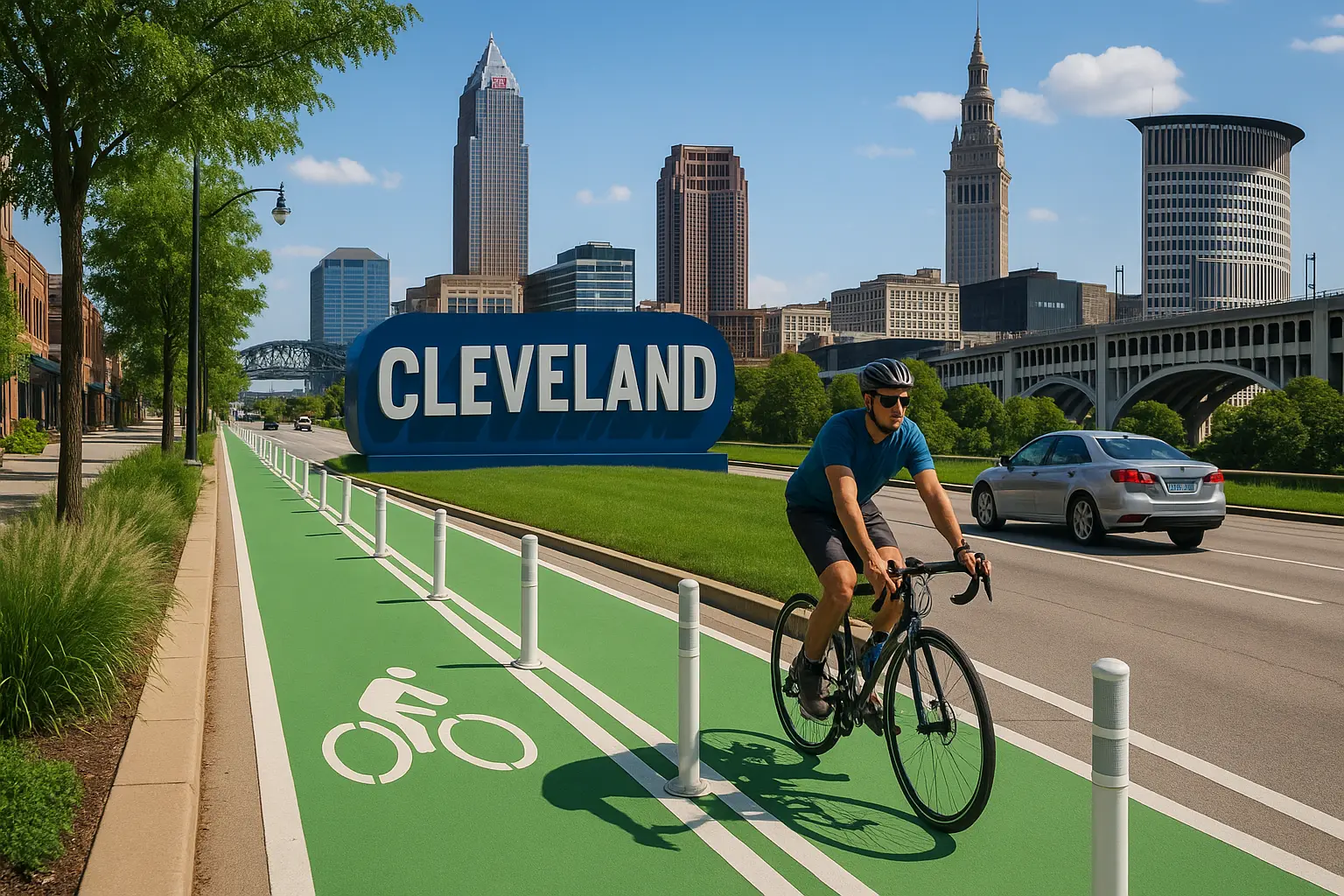Cleveland Bets Big on Bikes: 80km (50 Miles) of Protected Lanes in 3 Years
How a Rust Belt City is Reclaiming the Streets for People, Not Just Cars
Since I’m an avid biker myself, when I came across the news of Cleveland’s bold new plan, it struck a chord. I usually take my bike instead of my car—even for 30km (19 miles) errands. I’ve commuted 42km (26 miles) to the office, and as a kid, I rode 11km (7 miles) daily to the golf course. These days, I ride forest trails, rough terrain, and Zwift through winter. So when I see a car-centric American city embrace change like this, I don’t just applaud it. I relate to it.
Cleveland, long known for its industrial legacy and wide boulevards, is making a bold pivot: 80 kilometers (50 miles) of protected bike lanes by 2027.
Announced as part of the city’s new “Cleveland Moves” initiative, the plan marks a cultural and infrastructural shift that aims to prioritize people over pavement. In a city where car ownership has often been a necessity, Cleveland is daring to imagine a different kind of future—one where bikes, pedestrians, and public transit aren’t afterthoughts.
Protected bike lanes aren’t just paint. They involve physical barriers that shield cyclists from traffic—bollards, planters, curbs. They make cycling safer, more accessible, and more inviting for those who otherwise wouldn’t consider two wheels as a viable commute.
City officials say the project is about more than just traffic. It’s about equity. Neighborhoods underserved by transit will be first in line for upgrades. Health and climate benefits also factor in: fewer car trips means lower emissions and cleaner air. And as American cities face growing pressure to adapt to a post-car world, Cleveland is setting an example others might quietly follow.
“This is about the right to move safely,” says Chief City Planner Angela Whitmore. “We’re not just laying down asphalt—we’re laying the foundation for a healthier, more connected Cleveland.”
The timeline is ambitious. The city aims to complete the first 32 kilometers (20 miles) by end of 2025, with the remainder rolled out by 2027.
Funding Breakdown:
- $18M from the U.S. Department of Transportation’s Reconnecting Communities Grant
- $12M from municipal infrastructure bonds approved in 2023
- $5M in private partnerships and philanthropic support
Maintenance and snow-clearing have also been accounted for—often the Achilles heel of past cycling initiatives.
Design Details: The new lanes will feature raised curbs and painted buffers, with bus stop islands to prevent conflicts between cyclists and boarding passengers. Signal timing at major intersections will be adjusted for bike traffic, and wayfinding signage will be included across the corridor.
Public Response: Early public engagement meetings saw high turnout, particularly from residents in east-side neighborhoods long neglected by previous transit initiatives. Community leaders have praised the city for bringing bike equity into focus.
Still, not everyone is convinced. Some critics argue the plan disrupts traffic without solving core transportation issues. “We need better buses, not bike lanes,” said one local business owner at a community forum. Others worry the lanes will sit unused through long Midwest winters. But supporters counter that it’s not about replacing cars—it’s about giving people real options.
Comparative Insight: International comparisons also help frame the ambition. In Amsterdam and Copenhagen—long held up as global leaders in urban cycling—protected bike lanes are not luxuries, but basic infrastructure. There, cycling is safe, fast, and fully integrated into daily life. Cleveland’s planners aren’t aiming to copy these cities wholesale, but they’re borrowing a key insight: streets can be democratic spaces when they serve more than just cars.
Closer to home, cities like Minneapolis offer proof that American cycling infrastructure can work when done right. Minneapolis has over 160 kilometers (100 miles) of protected and off-street bike paths and regularly ranks among the most bike-friendly cities in the U.S. Cleveland’s 80-kilometer (50-mile) plan may be smaller, but it marks a significant cultural shift in the Midwest.
Whether it becomes a national model or a local experiment, one thing is clear: Cleveland isn’t just adding bike lanes. It’s redrawing the blueprint of the American street.
Live in Cleveland? Let your council rep know you support “Cleveland Moves.” Don’t? Share this story—because every city deserves a plan that puts people first.
Local news coverage from WKYC on Cleveland’s plan for protected bike lanes.
Community voices on how the Cleveland Moves plan impacts neighborhoods.
Read more at City of Cleveland – Cleveland Moves
Curious how infrastructure affects more than just commuting? I recently explored how America’s shifting image might impact global tourism and domestic jobs.
Read: What Happens to a Country Without Visitors?




Post Comment